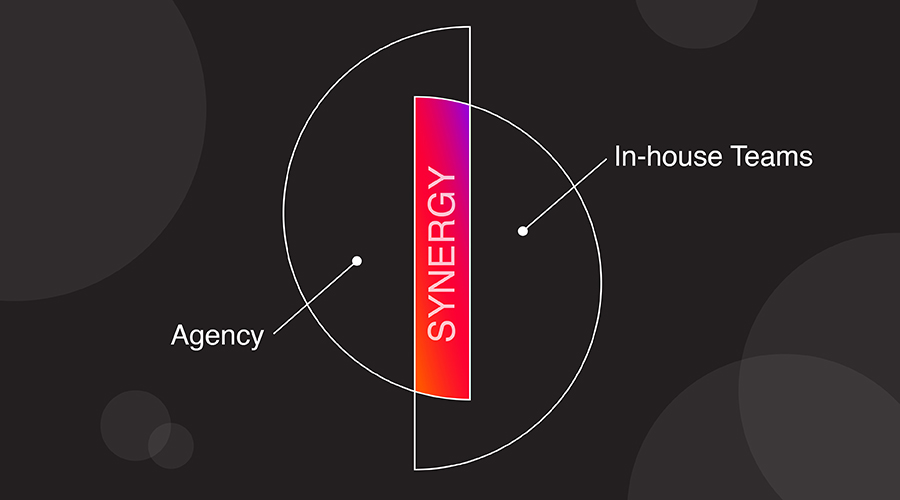It’s no secret that technology is a necessity in the marketing world. Without technology, we’d never be able to look up anything and everything on a moment’s notice…or as marketers, we could never find that 40-something male who owns a fleet of machines and makes $85K a year running a construction company. But, it’s also no secret that technology is a concern for our society. (I mean, I just spent 30 minutes trying to harmonize with Bach on today’s Google doodle, for no other reason than to ward off my writer’s block).
The key to harnessing the power of technology is to use it correctly—and that requires strategy. But which should come first, the investment in technology or a sound strategy? What’s more important, employing man or employing machine? What the marketing industry is quickly finding out is that you cannot simply put your technology in place and then take your hands off the wheel. The debate around man vs. machine is being squashed by the realization that we need both man and machine.
So, let’s take a look at what’s happening for marketers.
B2B Marketing Technology Adoption and Usage

As consumers continue to demand more personalized experiences, marketers turn to technology to deliver those promises. No matter what industry you’re in, you are using technology today in some shape or form. But what I find really interesting is how B2B marketers are adopting and using martech.
The first eMarketer chart shows you that B2B brands are increasingly investing in digital channels—with email marketing as the top tactic. But at the same time, if you look at the second eMarketer chart, you’ll see that only 26 percent of B2B marketers are using their marketing automation platform at an advanced level.
 It’s easy to see that B2B brands are definitely investing, but are they truly harnessing that power?
It’s easy to see that B2B brands are definitely investing, but are they truly harnessing that power?
Dig a Little Deeper
At this point, you’re probably saying ok, I get it. Technology is important, but it’s easier said than done. So, I wanted to go deeper and find out more. To do this, I went to one of the best sources I know—Simantel’s Executive Technology Director, Abby Bell. Although we live 800 miles apart, we talk on a regular basis and she was just a chat away (thank you, technology).
As the marketing technology landscape continues to evolve, what is the most common issue you are seeing today?
Abby: Hands down, putting technology before strategy. Most technology problems are actually strategy problems. We see first-hand that many B2B companies are force-fitting their strategy because they already made a heavy investment. And I’ll tell you, adding technology to an existing problem won’t necessarily make it better; this usually ends up costing a company more time and money.
We can generally tell this is happening when we hear, “We’d really like to do X, but we can’t so can we try to do Y.” Sometimes this is about social integration reverting to manual uploads or clean data depending on manual intervention and flat file uploads or transfers.
What recommendations would you give a company to make sure they are selecting the right technology?
Abby: It can be overwhelming, I get it. New tools and platforms seem to pop up every day. In 2018, there were almost 7,000 marketing technologies on the market—which means you have likely experienced an influx in sales call and recommendations. It’s easy to be confused or misled because each sales rep will tell you their platform is the one for you. The simplest answer I can give here is to take it step-by-step.
- GOAL SETTING: Start with your goals and make them measurable. What is it that you want your customers or potential customers to do? And within goals, identify your audience: who is the ideal customer?
- STRATEGY: Once your goals and audience are defined, let’s get at your strategy. How are you going to achieve that goal? If you had no data limitations or technology limitations in place today, what does utopia look like? And here’s the important part: make sure to get all stakeholders on the same page before any work begins. We recommend a workshop for this.
- KEY PERFORMANCE INDICATORS: How are you going to measure your success? And more importantly, what is success? In the beginning, a KPI might be “increase email deliverability” or “launch MVP SMS campaign.” Once you set your own benchmarks and customize the technology to suit your needs, then you might have a KPI that says “convert five percent of campaign participants to online shoppers” or “decrease cost per acquisition by 20 percent.”
- TECHNOLOGY: Only then can you truly select the technology to support the “moments of truth.” (Check out this webinar 9:55 into the recording to learn more about moments of truth). When you meet with a potential technology vendor, how amazing would it be to say “we need a technology that does ABC today and in two years we want it to be able to do XYZ.” This way, you’re not being sold on features – you’re finding the right match for your needs.
What would your advice be if someone already invested in a new technology and they are too far down the road to stop and start over?
Abby: Great question. First of all, it’s never too late! So, take a second and breathe and follow these steps below.
- Don’t “unplug” your system as a knee-jerk reaction. Although this can be tempting, there’s likely some good work that can be salvaged from the efforts you’ve put forth.
- Take inventory and conduct a proper assessment. Pull the metrics and see what’s working and what’s not so you can make data-based decisions. Also, during your assessment, look at the infrastructure (what has been built to support your technology) and your data flow (where does your data go, when does it go and why does it go there).
- Think through your data and content strategy without considering technology.
- Be willing to take a phased approach. Whether the phases are in executing, connectivity or reporting, it’s okay to start with an MVP.
Bonus Tip: Remain Objective
Even at Simantel, we spent time evaluating the best marketing automation platform to use for our own newsletter. And while I knew our legacy system really well, I had to put my feelings aside on which platform I personally preferred to work in for the betterment of our goals. And what I found was, with Abby’s help, I was able to easily adapt and hit the ground running because we had a strategy in mind and our needs as a company continued to evolve. Sometimes it takes an outside viewpoint, so don’t be scared to leverage an expert, too.





